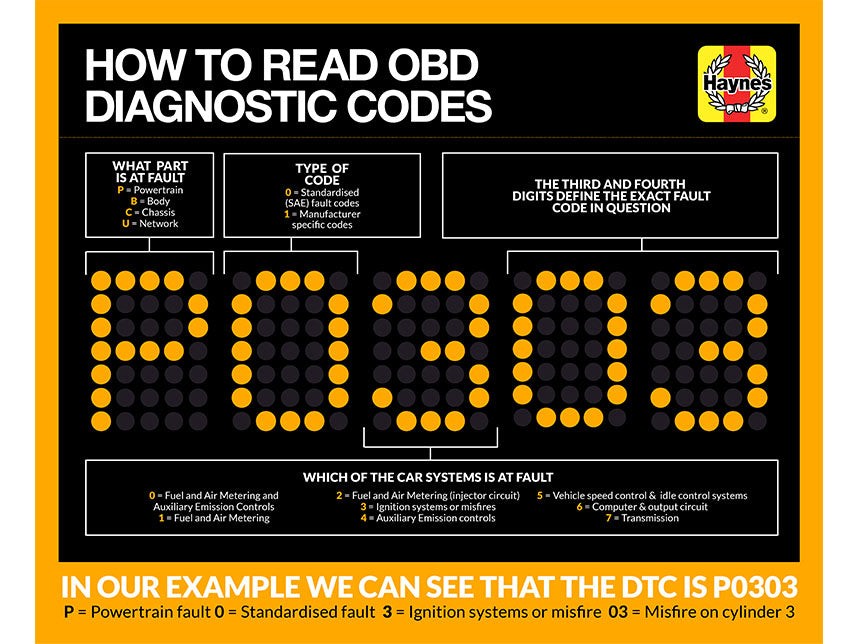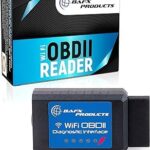Understanding Diagnostic Trouble Codes (DTCs) is crucial for effective car repair. Your car communicates problems through the On-Board Diagnostics II (OBD2) system by storing these codes in the Engine Control Unit (ECU). This comprehensive Dtc Chart For Obd2 Cars will help you decipher these codes and pinpoint the issue. By using an OBD2 scanner, you can retrieve these codes and gain valuable insights into your vehicle’s health.
Decoding the Structure of OBD2 Trouble Codes
OBD2 codes follow a specific formula: a letter followed by four numbers. Each component provides clues to the problem’s location and nature.
The First Letter Indicates the Affected System:
- P: Powertrain (engine, transmission, emissions)
- B: Body (airbags, power seats, central locking)
- C: Chassis (ABS, suspension, steering)
- U: Network (communication systems)
The First Number Signifies the Code Type:
- 0: Standardized (SAE) code, common across all manufacturers.
- 1: Manufacturer-specific code, unique to the carmaker.
The Second Number Specifies the Subsystem:
- 0: Fuel and Air Metering and Auxiliary Emission Controls
- 1: Fuel and Air Metering
- 2: Fuel and Air Metering (Injector Circuit)
- 3: Ignition Systems or Misfires
- 4: Auxiliary Emission Controls
- 5: Vehicle Speed Control and Idle Control Systems
- 6: Computer and Output Circuit
- 7: Transmission
The Third and Fourth Numbers Pinpoint the Specific Fault:
These digits provide the detailed code for the exact problem. For instance, P0303 signifies a misfire in cylinder 3. “P” indicates a powertrain issue, “0” a standardized code, “3” relates to the ignition system, and “03” specifies a misfire in the third cylinder.
 OBD-II connector
OBD-II connector
Comprehensive OBD2 DTC Chart
This chart lists common OBD2 trouble codes. Remember, not all codes apply to every vehicle model. Consulting your vehicle’s specific repair manual is always recommended.
| Code | Code Identification |
|---|---|
| P0101 | Mass Air Flow (MAF) Sensor Circuit Range/Performance Problem |
| P0102 | MAF Sensor Circuit Low Input |
| P0103 | MAF Sensor Circuit High Input |
| P0171 | System Too Lean (Bank 1) |
| P0172 | System Too Rich (Bank 1) |
| P0300 | Random/Multiple Cylinder Misfire Detected |
| P0301 | Cylinder 1 Misfire Detected |
| P0302 | Cylinder 2 Misfire Detected |
| P0303 | Cylinder 3 Misfire Detected |
| P0420 | Catalyst System Efficiency Below Threshold (Bank 1) |
| P0440 | Evaporative Emission Control System Malfunction |
Conclusion
This DTC chart for OBD2 cars serves as a starting point for diagnosing car problems. While it offers a general overview, always refer to your vehicle’s service manual for precise code definitions and troubleshooting procedures. Using this chart along with an OBD2 scanner empowers you to understand your car’s issues and address them effectively. Accurate diagnosis is the first step towards a successful repair.
